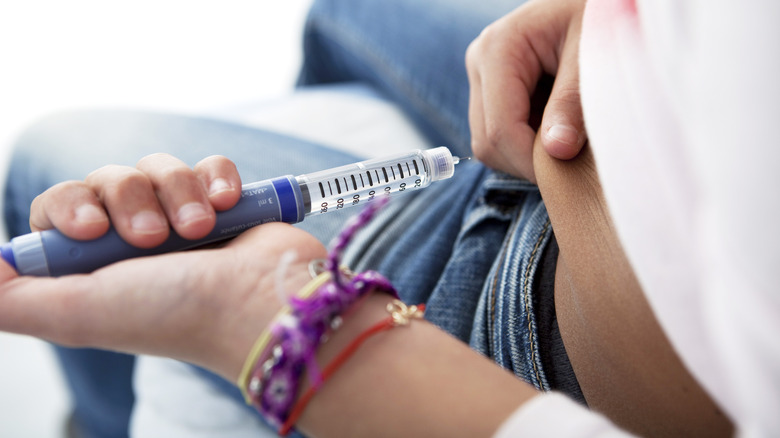The Diagnosis That Can Mimic An Eating Disorder
Eating disorders are quite common. In fact, the South Carolina Department of Mental Health writes that an estimated 8 million people in the United States have one. Further, nearly half of all Americans personally know someone who has disordered eating.
According to The Meadows Ranch, some of the early warning signs of an eating disorder include weight loss and changes in eating patterns. In addition, people might become preoccupied with body image or nutritional content, or begin exercising obsessively. They might also demonstrate moodiness and anxiety. Some will also begin to misuse laxatives, diuretics, or diet pills in their pursuit of thinness.
With weight loss being one of the more visible signs of an eating disorder, it is natural that parents may become concerned if they see their child losing a large amount of weight. Medical professionals may have a high degree of suspicion of this as well, since these disorders are so common. However, it pays to bear in mind that certain medical conditions can also mimic the symptoms of an eating disorder.
Type 1 diabetes can mimic an eating disorder
The Mayo Clinic states that type 1 diabetes is a chronic, incurable condition in which the pancreas can only make very little or no insulin at all. Insulin is important because it makes it possible for sugar to move into our cells for energy production. According to Creekside Family Practice, when insulin is not available to move sugar into the cells, the body begins to burn its own fat and muscle for energy, leading to weight loss.
The U.S. Centers for Disease Control and Prevention (CDC) notes that the most common age for being diagnosed with this disease is around 13 or 14 years old. In order to not miss a type 1 diabetes diagnosis, it is crucial for diagnosticians to keep an open mind when they see a young person with unexplained weight loss. The Mayo Clinic explains that untreated diabetes can lead to serious complications, including cardiovascular disease; damaged nerves, kidneys, eyes, and feet; gum disease; problems during pregnancy; and even death.
Certain telltale signs, such as frequent urination and constant thirst, may help distinguish diabetes from an eating disorder. Testing can be done as well to rule out this condition. Treatment will involve taking insulin multiple times per day or using an insulin pump, says the National Institute of Diabetes and Digestive and Kidney Diseases.


